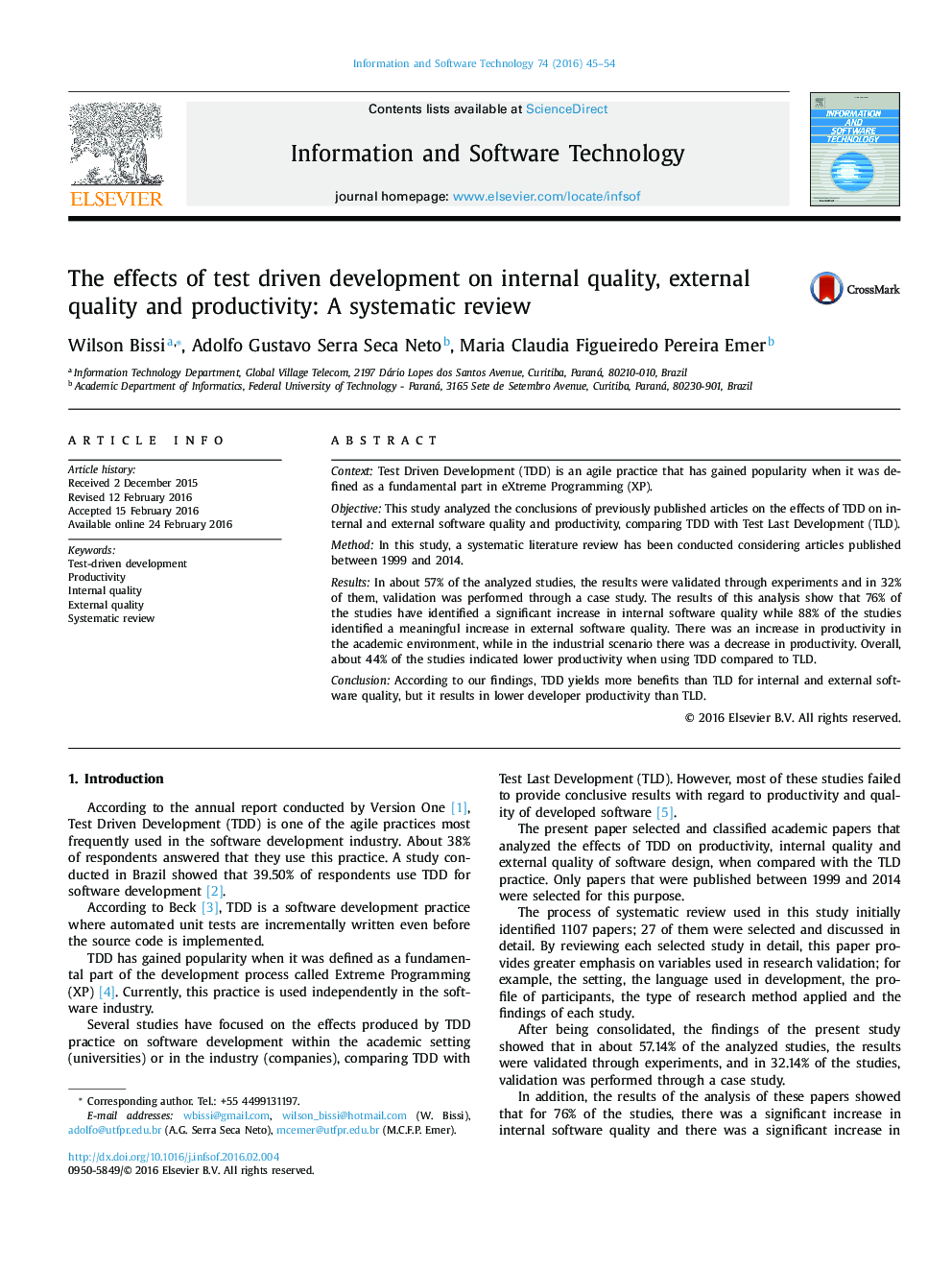| Article ID | Journal | Published Year | Pages | File Type |
|---|---|---|---|---|
| 550471 | Information and Software Technology | 2016 | 10 Pages |
•This paper examines articles published between 1999 and 2014.•A total of 1107 articles were collected and 27 were studied in depth.•The studies have shown an increase in productivity in the academic environment, but a decrease in an industrial scenario, when using TDD.•Most of the studies (76%) have identified an increase in the internal software quality and even more (88% of the studies) identified an increase in external software quality when using TDD.
Context: Test Driven Development (TDD) is an agile practice that has gained popularity when it was defined as a fundamental part in eXtreme Programming (XP).Objective: This study analyzed the conclusions of previously published articles on the effects of TDD on internal and external software quality and productivity, comparing TDD with Test Last Development (TLD).Method: In this study, a systematic literature review has been conducted considering articles published between 1999 and 2014.Results: In about 57% of the analyzed studies, the results were validated through experiments and in 32% of them, validation was performed through a case study. The results of this analysis show that 76% of the studies have identified a significant increase in internal software quality while 88% of the studies identified a meaningful increase in external software quality. There was an increase in productivity in the academic environment, while in the industrial scenario there was a decrease in productivity. Overall, about 44% of the studies indicated lower productivity when using TDD compared to TLD.Conclusion: According to our findings, TDD yields more benefits than TLD for internal and external software quality, but it results in lower developer productivity than TLD.
